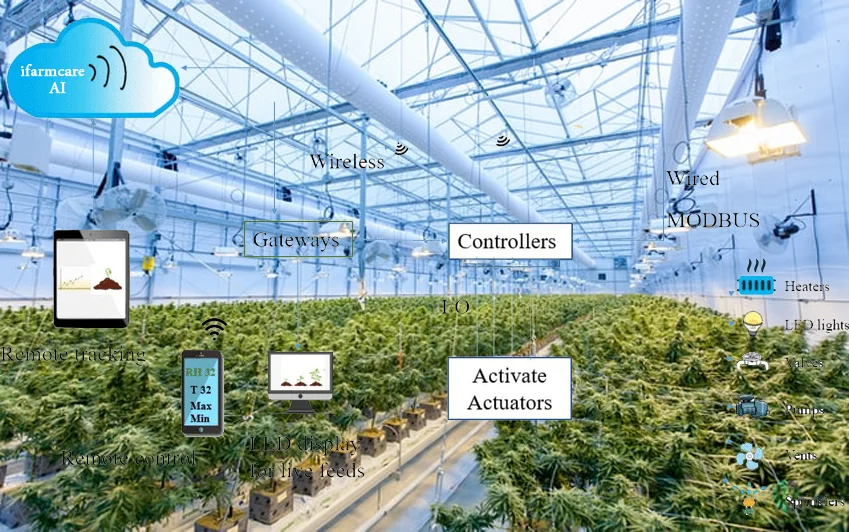No products in the cart.
Blogs and articles
The reason for using smart greenhouses
Smart Greenhouses: Enhancing Efficiency and Yield in Agriculture
Introduction:
Smart greenhouses have emerged as a cutting-edge solution in modern agriculture, leveraging advanced technologies to optimize crop cultivation. These innovative facilities incorporate a range of features and capabilities that revolutionize traditional farming practices. By integrating automation, data analytics, and precise control systems, smart greenhouses offer significant benefits in terms of increased efficiency, improved crop quality, and reduced environmental impact. In this article, we will explore the key capabilities of smart greenhouses and discuss the various factors that require meticulous control within these advanced agricultural environments.
Key Capabilities of Smart Greenhouses:
- Climate Control: One of the primary advantages of smart greenhouses is the ability to regulate the internal climate conditions. Advanced sensors continuously monitor factors such as temperature, humidity, and light intensity. Based on this real-time data, automated systems adjust ventilation, heating, and cooling mechanisms to create an optimal environment for plant growth. This precise control enables farmers to extend growing seasons, mitigate weather-related risks, and cultivate crops that are otherwise unsuitable for the local climate.
- Irrigation and Nutrient Management: Smart greenhouses employ automated irrigation systems that ensure plants receive the appropriate amount of water at the right times. Sensors measure soil moisture levels, and water is distributed accordingly, minimizing waste and reducing the risk of overwatering or underwatering. Additionally, nutrient levels in the soil can be closely monitored and adjusted through precise dosing systems, guaranteeing optimal nutrition for the plants.
- Lighting Optimization: Natural sunlight is vital for plant growth, but smart greenhouses integrate artificial lighting systems to supplement or replace sunlight when necessary. LED lights with adjustable spectrums can be tailored to specific plant requirements, promoting photosynthesis and accelerating growth. By optimizing light cycles and intensities, smart greenhouses can achieve higher crop yields and accelerate production cycles.
- Pest and Disease Management: In a controlled environment, smart greenhouses can effectively combat pests and diseases that pose threats to crops. Integrated pest management systems employ a combination of techniques, including automated monitoring, early detection, and targeted interventions. Proactive measures such as deploying beneficial insects, using organic pesticides, or implementing sterilization protocols can help minimize the use of chemical treatments and maintain crop health.
- Data-Driven Decision Making: Smart greenhouses generate a wealth of data through the various monitoring and control systems. This data can be analyzed using advanced algorithms and machine learning techniques to extract valuable insights. Farmers can make informed decisions based on real-time and historical data, optimizing resource allocation, predicting crop performance, and identifying areas for improvement. This data-driven approach enhances productivity, reduces costs, and maximizes overall efficiency.
Conclusion:
Smart greenhouses represent a significant leap forward in agricultural practices, combining automation, precision, and data-driven techniques to optimize crop cultivation. By controlling climate conditions, irrigation, lighting, and pest management, these advanced facilities provide an ideal environment for plants to thrive. The integration of technology and data analytics empowers farmers to make informed decisions, resulting in higher yields, reduced resource waste, and improved sustainability. As the demand for efficient and sustainable agriculture grows, smart greenhouses have the potential to revolutionize the way we produce food and mitigate the challenges of traditional farming methods.

